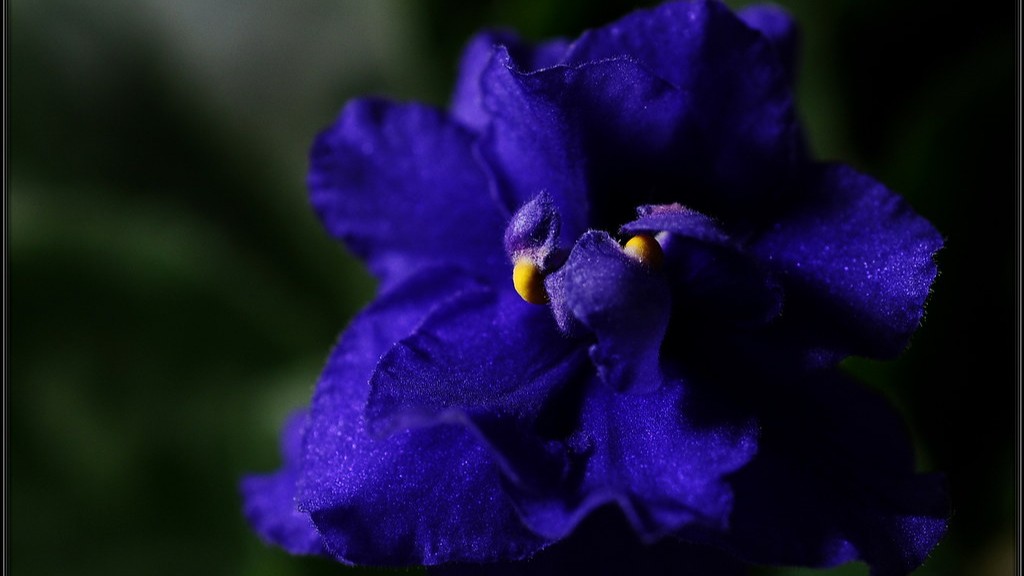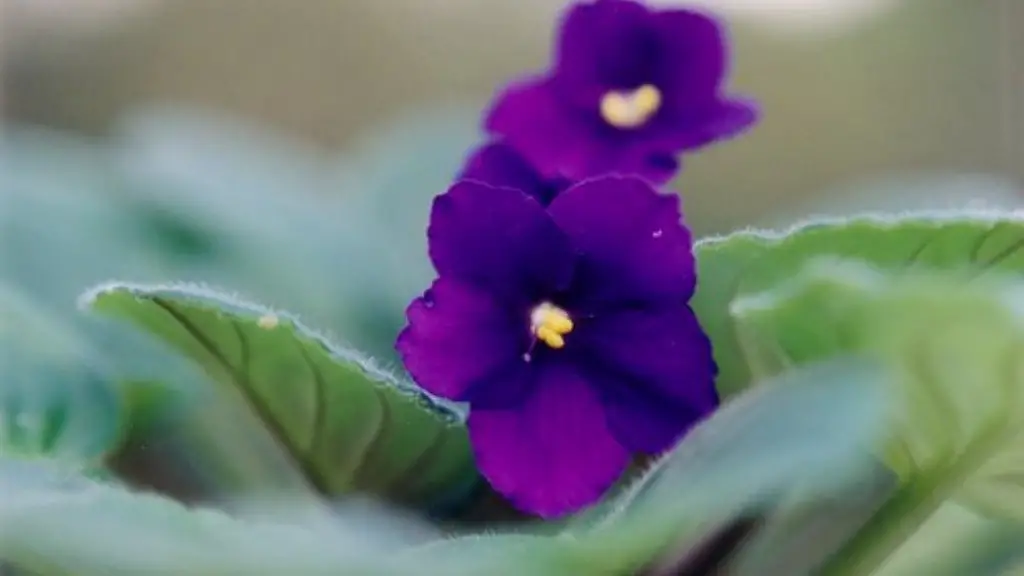Most people believe that African violets are very delicate flowers that are difficult to care for. This common misconception probably comes from the fact that they are native to Africa, where the climate is very different from most other parts of the world. The truth is, however, that African violets are actually quite easy to care for, as long as you understand their basic needs.
The answer to this question is “it depends.” African violets are a type of plant that can be relatively easy or difficult to care for, depending on the individual plant and the level of care it needs. Some African violets are easier to care for than others, and some require more attention and care. Ultimately, it depends on the plant and the person caring for it.
Are African violets good for beginners?
African violets make great houseplants because they are easy to take care of and can bloom year-round with the right care. They are also a good choice for beginners, as they are not difficult to grow. However, there is enough variety in the species of African violets to keep even experienced gardeners interested.
If you want to keep your African violet happy and healthy, there are a few key things you need to keep in mind. Make sure you provide the right kind of potting mix, give them the right amount of light, water them properly, and keep them at the right temperature. With a little care, your African violet will thrive for years to come!
Are African violets low maintenance
African violets make great houseplants because they are low maintenance and easy to care for. They will bloom several times a year if they are cared for properly.
African violets need indirect sunlight in order to thrive. Direct sunlight can actually burn the leaves of the plant, so it’s important to choose a north- or east- facing window for best results. Additionally, keep plants away from cold glass and rotate the pot once a week so all leaves receive light. You can also extend daylight by placing African violets under a grow light during winter months.
What is the lifespan of African violet?
African violets are beautiful flowers that can brighten up any room. They have a long lifespan and can last up to 50 years with proper care. Repotting them every few years is essential to keeping them healthy and vibrant.
Wicking systems are an easy and efficient way to water your African violets without the risk of over watering. Simply fill a reservoir with water and insert a wick into the soil of your plant. The wick will draw water up from the reservoir as needed, keeping the soil moist but never soggy.
Do African violets like bigger pots?
When choosing a pot for your African violet, it’s best to go with something on the smaller side. This will help to keep the plant slightly pot-bound, which is ideal for its growth. Keep in mind that if you have a standard African violet plant, your starter pot should ideally be about 3-4 inches in diameter.
If you are growing African violets, you can water them from the top or bottom. Either method is fine, but it is important to use lukewarm or warm water, rather than cold water. If you water from the top, be careful not to get water on the leaves when the plant is in the sun. This can cause leaf spots.
Should African violets be misted
As with all houseplants, it’s important to not over-water your African Violet. Water on the foliage may cause permanent leaf spotting, so it’s best to mist the plant rather than getting the leaves wet. Use water that is room temperature so as not to shock the plant, and be sure to allow the soil to dry out in between watering. African violets are susceptible to crown rot, so it is important that the crown (the section of the plant at soil level) is not saturated with water. If you notice the leaves of your African Violet starting to yellow or wilt, check the crown of the plant to make sure it is not waterlogged.
To get the best color and blooms from your plants, grow them in bright, indirect light. A plant stand three feet away from a west- or south-facing window is an ideal location. Plants will still grow when situated right beside north- or east-facing windows, but leaves will be thin and spindly, and plants less likely to bloom.
How often do you feed African violets?
African Violets are beautiful, delicate plants that are native to Africa. They need fertilization to stay healthy and bloom throughout the year. During the spring and summer, you should fertilize your African Violet once every two weeks. In the fall and winter, you should not fertilize the plant at all to prevent over-fertilizing.
Leaving water on the leaves of violets can result in a number of problems, the most serious of which are Crown Rot and Pythium. These diseases can be deadly to the plant, and so it is important to avoid excessive moisture on the leaves. Brown or yellow leaf spots are also a possibility, though they are much less serious. Again, it is best to avoid leaving water on the leaves to prevent these problems.
What is the best way to water African violets
It is best to water African violet plants from the bottom up. Place the plant in a shallow tray of water for 30 minutes, allowing the soil to soak up the water through the drainage holes at the bottom of the pot.
African violets are a symbol of devotion, commitment, and faithfulness. No matter what the cause is, these flowers represent someone who is devoted to their cause and will stay faithful to it.
What pots are best for African violets?
African violets are a type of flower that is known to be relatively easy to care for. Because of this, many people enjoy growing them. One of the main things that you need to consider when growing African violets is what type of pot to use. There are a number of different options available, but not all of them are created equal. Here are six of the best pots for African violets, based on a number of different factors.
1. Mkono 3 Pack Self Watering Plastic Planter – This option is a great choice if you are looking for an affordable way to water your plants. The plastic construction is also lightweight, making it easy to move around as needed.
2. Ceramic Pot with Saucer – This option is a great choice if you are looking for a classic look. The ceramic material is also very sturdy, so you don’t have to worry about it cracking or breaking.
3. Blue Self Watering Ceramic Planter – This option is a great choice if you want a pop of color in your home. The self-watering feature is also a nice touch, as it can help to keep your plants healthy and hydrated.
4. Aquaphoric
Brushing the leaves of an African violet can actually damage the plant and lead to a decrease in size and quality. The next time you’re tempted to touch one, remember to keep your hands off for a healthier plant!
Warp Up
African violets are not difficult to care for, but they do require some basic knowledge to maintain their health and keep them blooming. Some tips on caring for African violets include:
– water them regularly, but do not overwater; the soil should be moist but not soggy
– provide bright, indirect light; too much direct sunlight can scorch the leaves
– fertilize them every other week with a specialized African violet fertilizer
– keep the leaves clean by dusting or wiping them with a damp cloth
Yes, they are. African violets are one of the easiest plants to care for indoors. With just a little bit of water and light, they will thrive and bloom for years.





